Day 10: Sunday, June 20th
The previous night the owner mentioned we would probably have a good sunrise over Keweenaw Bay the next day. Although I am generally an early riser and need no encouragement to do this, I made sure I would be out of bed at my usual 5AM.
Click on the photos below for a larger image.
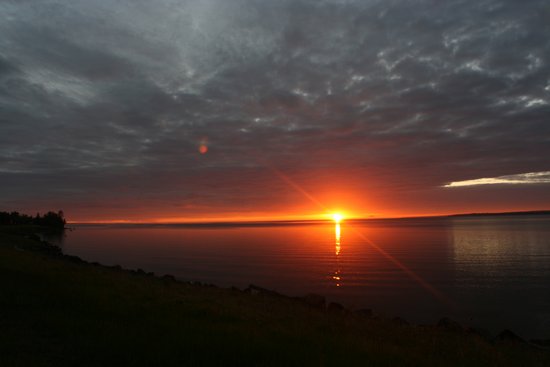
I was not disappointed!
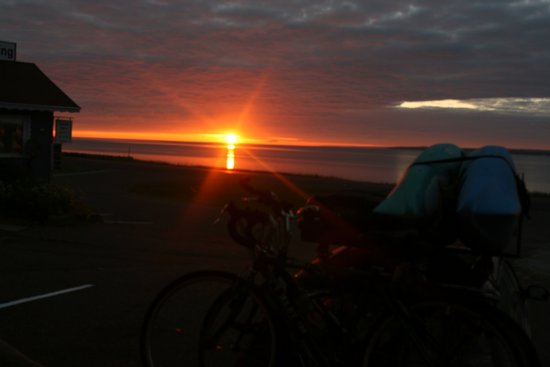
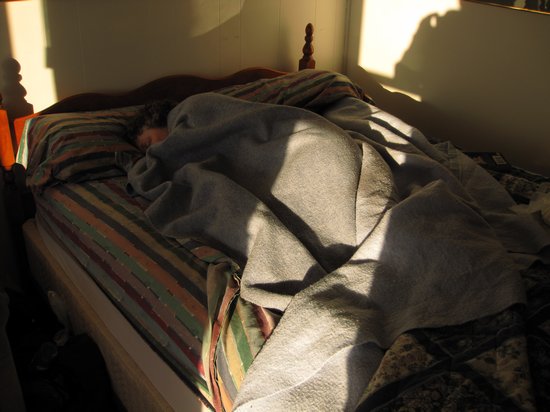
Why Betsy missed the sunrise.
After rising, Betsy started her journal for the previous day. She had not missed a day so far and her notes and observations have been a big help to me in writing up my reports as well as fun to read.
After she finished her journal she donned her swimsuit and grabbed her binocs and her book and headed across the road to the loungers on the shore line. She actually had the nerve to take a dip!! She said it was COLD!
Needing a break from the 'puter I fixed myself a bowl of cereal and joined her in the sun and scenery of the Keweenaw Bay. Nice breakfast spot to be sure. Then it was back to the webulizing while Betsy tidied up our room.
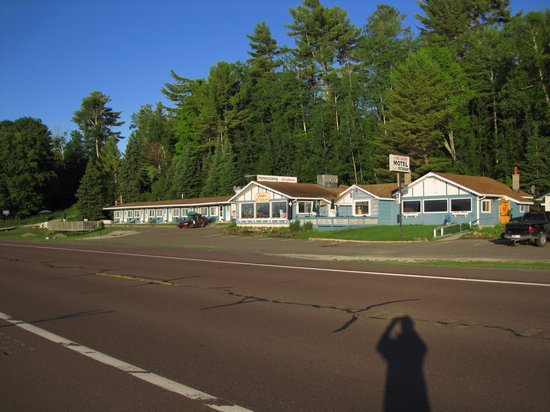
We opted to stay for two nights at Carla's since we liked the locale and had found what looked like another good hike in Eric Hansen's book.
This one would take us on a 3.6 mile out and back hike along the Sturgeon River to see Tippets Falls and some very scenic river sections.
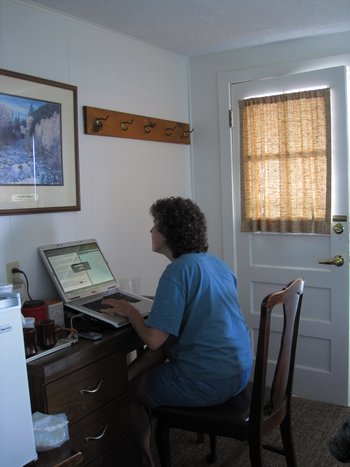
But - first things first!
Here Betsy proofs my latest trip report. Thanks, Betsy!
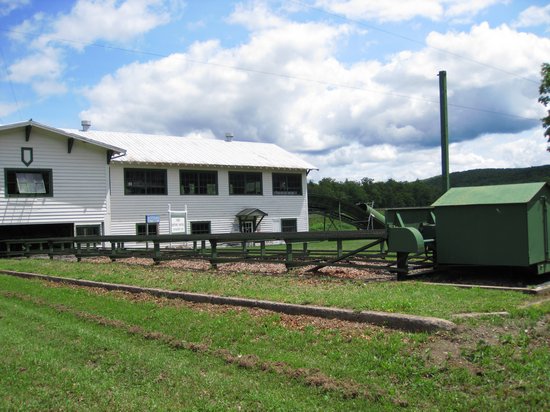
Our route to the trail-head took us back through the town of Alberta where I had noticed this curious looking structure when we were on our way up to the Keweenaw.
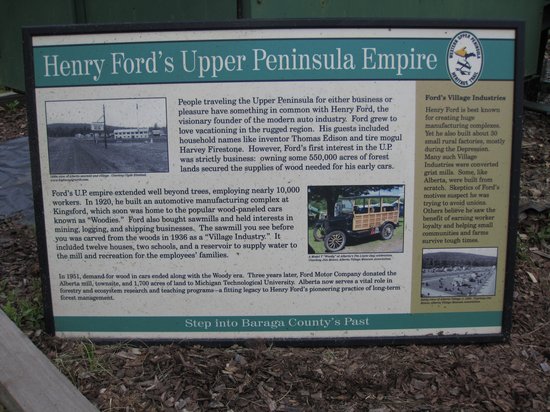
This sign gave an overview of what was there and why. Here is more:
Named after the daughter of Henry Ford’s manager of operations, F.G. Johnson, Alberta is the home of one of Ford’s seven sawmills in the Upper Peninsula.
Ford chose the site for the mill, which lies 10 miles south of L’Anse on U.S. 41, when he stopped there for a picnic in 1935. A year later the town was founded and the mill began operation.
The sawmill employed 22 workers at a time and turned out 16,000 board feet a day. The mill was self-sufficient, powering itself with the waste it produced. In fact, the mill is equipped with a conveyer belt that runs beneath the floor for the purpose of carrying sawdust and scraps directly to the furnace. The mill also provided electricity for the small community.
In keeping with his ideas of conservation and efficiency, Ford created Alberta to be a model town. Aside from the mill he built two schools, twelve houses and a reception building with the first of the mill’s lumber. He also required each family to farm two acres of land for food. Unfortunately, the crops were often poor due to the soil or eaten by deer forcing the residents to buy groceries in L’Anse.
According to Alan Niemela, Sawmill manager for the Baraga Historical Society, Alberta was a social experiment of Ford’s.
“He built two school houses, provided a teacher and furnished lunches for the children,” Niemela said. “He believed in clean living, never allowing a tavern around his mills.”
During its operation, many visitors went to the mill in Alberta. Records show that more than 3,000 visited in August of 1938. “Ford encouraged visitors to stop by and visit his model town,” Niemela said. Everything in the mill was painted and varnished so it could be kept clean for visitors.
The mill was operated until Ford’s death in 1947. In 1954 the mill and 2,000 acres were donated to Michigan Technological University. MTU developed the Ford Forestry Center, which conducted forest research in the 5,000 acre forest near the town. The mill contributed in lumber recovery studies developing grade recovery standards for the areas northern hardwoods. Although the mill is no longer used, MTU still holds classes and conducts research in Alberta.
In August of 1998 the mill was dedicated as the Ford Historic Sawmill and is now open to the public. The Baraga County Historical Society operates the museum and, with the help of a donation from Ford, continues to restore the site. Future plans call for a viewing center where visitors can watch a brief history of the mill. An oral history of the town and mill through interviews with past workers will complete the visitors’ experience. The society also plans to make a new Ford logo from white quartz to match the original near the mill.
The museum is set up for self-guided tours, but there are also staff available to conduct tours and answer questions.
Written by Bethany EshbachSource: Keweenaw Traveler
Unfortunately the
museum was closed.
There is more about Alberta
here and it is worth reading.
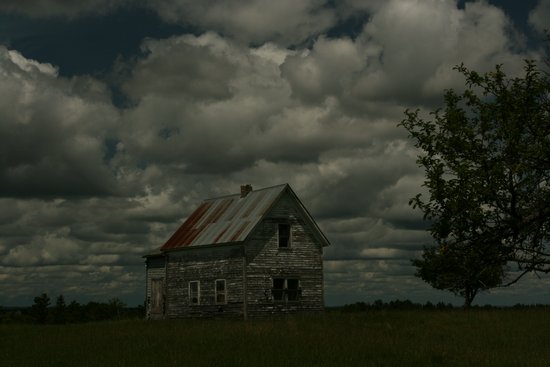
A rather dark and gloomy look at an old abandoned farm house.
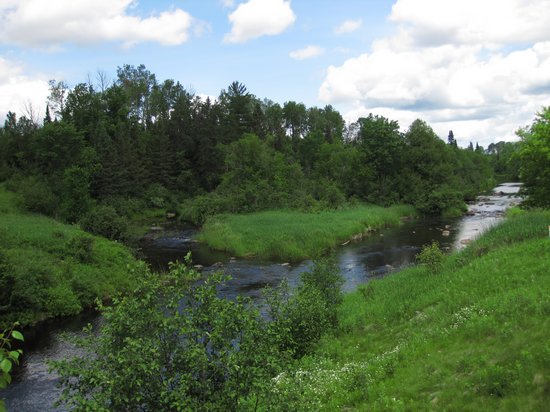
We got to the trailhead around noon-ish. This is the Sturgeon River as seen from the bridge on Plains Road where the trail head is located.
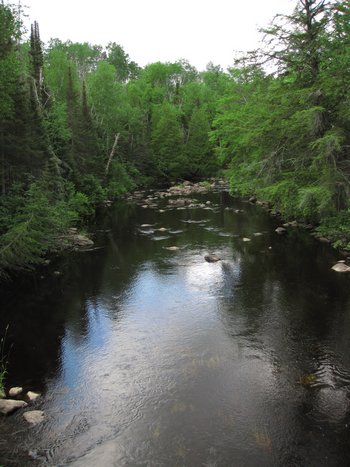
The view downstream from the bridge.
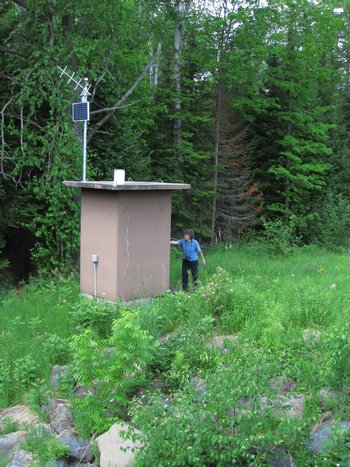
Can't start a hike without a "comfort stop" first. Betsy and I had never seen an outhouse with TV before. Them Yoopers really know how to live!
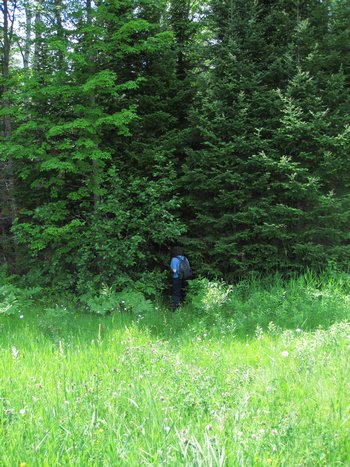
Like Alice down the rabbit hole, Betsy disappers into the Balsam.
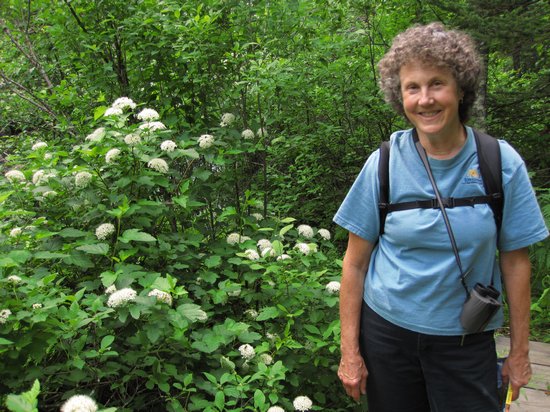
We saw this nice specimen of Ninebark (Physocarpus opulifolius) about a quarter of a mile down the trail.
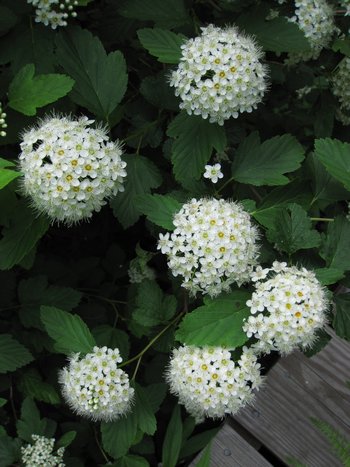
Noted for its exfoliating bark (on mature branches) which peels in strips to reveal several layers of reddish to light brown inner bark (hence the common name of ninebark).
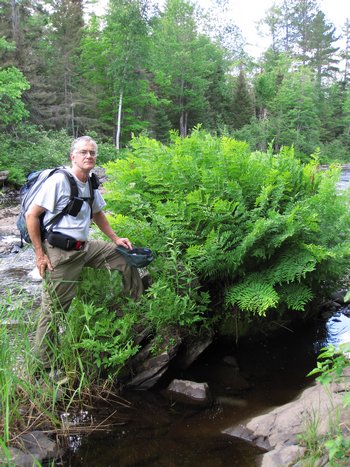
This is one fine specimen of Royal Fern (Osmunda regalis)!
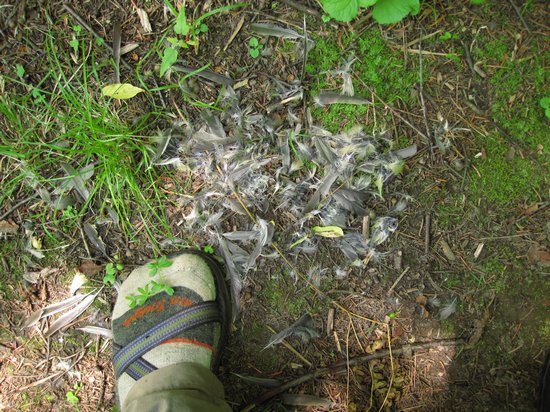
We wondered who was snacking here and on what.
Note the Chacos. My sister gave them to me several years ago and I seldom wear them except while boating. But, my chronic foot pain was getting worse and it was not only having a negative impact on my enjoyment while hiking, but it had now become my limiting factor on distance.
So, I decided to experiment and try the chacos hiking. It felt weird at first. My feet felt naked and vulnerable. But, on this, my maiden voyage hiking in Chacos, I had no foot pain. Sure, my feet got tired and sore like always, but I did not have the severe pain which is sometimes debilitating. Hallelujah!

Some of the nice rapids where the water frothed over the slate ledges in the river bed.
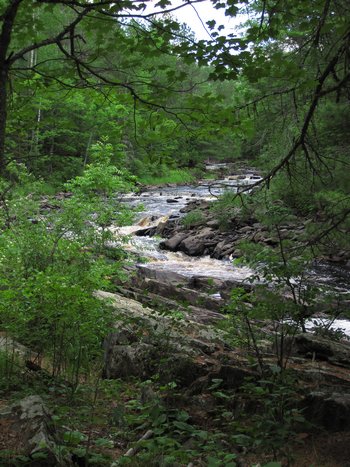
Nice!
We hiked to the turn around point but never found the hiking shelter mentioned in Eric's book. It may have been a casualty of the fire which had been through there recently.
We saw a guy trout fishing one of the rapids and then later one of the quiet spots. He asked what stream he was on now and he was surprised when we told he was still on the Sturgeon, but on the slow and quiet section Eric mentioned in his book. He had left the rapids behind.
We headed back up stream, now hot and sweaty and looking to get cooled off. On the way down stream we had spotted what looked like a good place for a dip and we were ready for it.
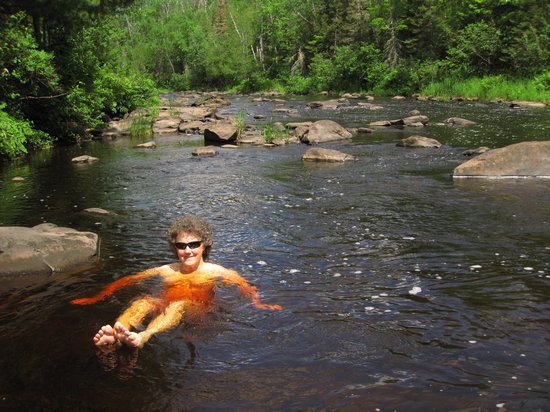
Ahh...! The water was perfect.
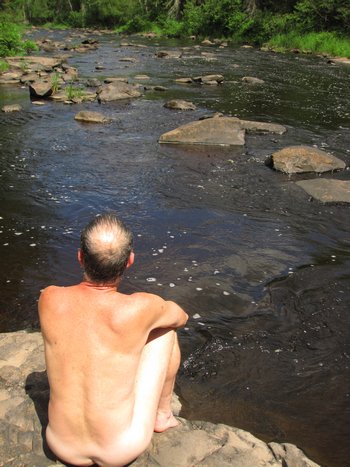
At one point in our hike some old guy joined us and insisted on skinny-dippin' with us. I thought it was pretty nervy but Betsy did not seem to mind.
When we got back to the car it was 4:30 which surprised us both. We are getting pretty good at frittering away the days having fun and relaxing.
On our way back we stopped in L'Anse at Pat's IGA grocery and got some salad fixin's for dinner which was a "make your own" affair. We have been fixing quite a few mega salads and having them for dinner. Hopefully this will help counter the effects of some of the not so small or healthy dinners we have had while on the road.
Early to bed as usual. While Betsy snored away I listened to the noise of the traffic on the road.